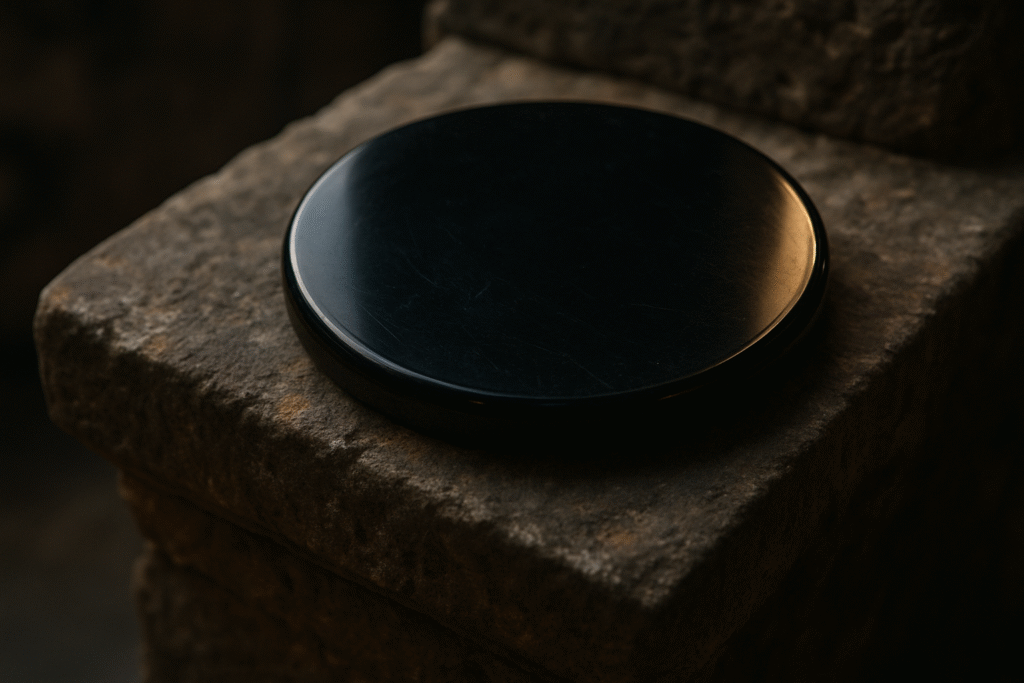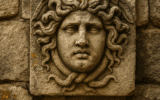In the heart of Mesoamerica, amid temples of stepped stone and altars dusted with centuries of incense, lie objects that seem to defy the ordinary. Flat, black, and gleaming with an almost liquid darkness, obsidian mirrors once carried the weight of empires and the voices of gods.

These were no mere tools of vanity. To the Maya, to the Aztecs, and to others before them, mirrors crafted from volcanic glass were gateways — polished surfaces where the earthly and the divine converged. When a priest leaned over an obsidian disk, he did not see only his reflection; he saw the shimmering threshold to other realms, the whispers of ancestors, the gaze of deities.
The Craft of Shadows
Obsidian, born from the violence of fire and stone, was valued across the ancient world for its cutting edges sharper than steel. Yet in Mesoamerica, artisans raised it to new heights. Blocks of volcanic glass were carved, sanded, and polished until their surfaces shone with a darkness so pure it seemed to swallow light. Unlike bronze or gold, which reflected with brilliance, obsidian reflected with mystery — it did not dazzle; it revealed.
The mirrors were often circular, like captured fragments of eclipsed suns. Their surfaces bore no decoration, for none was needed: the mirror itself was the art, the portal, the omen.
The Sacred and the Fearful
In Aztec cosmology, obsidian was sacred to Tezcatlipoca, the Smoking Mirror, a god of night, fate, and sorcery. His very name derived from the material, and through it he ruled over destiny. Mirrors of obsidian became instruments of prophecy — tools through which shamans divined the future, peered into hidden realms, or communed with spirits of the dead.

But where there is vision, there is dread. The same mirrors that revealed truth could also reveal death. To glimpse one’s reflection in the wrong moment was to invite misfortune. To stare too long was to risk madness.
Thus, the obsidian mirror stood as a paradox: a gift of clarity and a harbinger of doom.
Archaeological Whispers
Today, these mirrors emerge from the earth like fragments of forgotten dreams. Archaeologists uncover them in temples, buried in offerings, or laid in the graves of rulers and priests. Each polished disk is a relic of a vanished worldview — proof that reflection was never just physical, but spiritual.
Some mirrors have even traveled across oceans. One obsidian mirror sits in the British Museum, believed to have belonged to the Aztec priests of Tezcatlipoca. To gaze into it now is to confront not just the past, but the disquieting awareness that humans have long sought meaning in shadows.
Legacy of the Dark Glass
Though the temples have crumbled and the priests’ chants have faded into silence, the obsidian mirror still speaks. Its surface is not blank; it is charged — with memory, with fear, with reverence.

Modern artists, occultists, and seekers continue to be drawn to obsidian mirrors, using them as symbols of introspection and transformation. In their depths, some find reflection; others find confrontation. For all, the message is clear: what we see is not always what is.
Conclusion
The obsidian mirror is more than volcanic glass, more than polished stone. It is a reminder that human beings have always sought to pierce the veil — to see beyond themselves, to find meaning in the unseen.
Where ancient priests once saw the faces of gods, we see echoes of their longing: for connection, for clarity, for power. In that dark glass lies a truth as enduring as stone — that the human spirit is forever restless, forever gazing into the unknown.


Reply